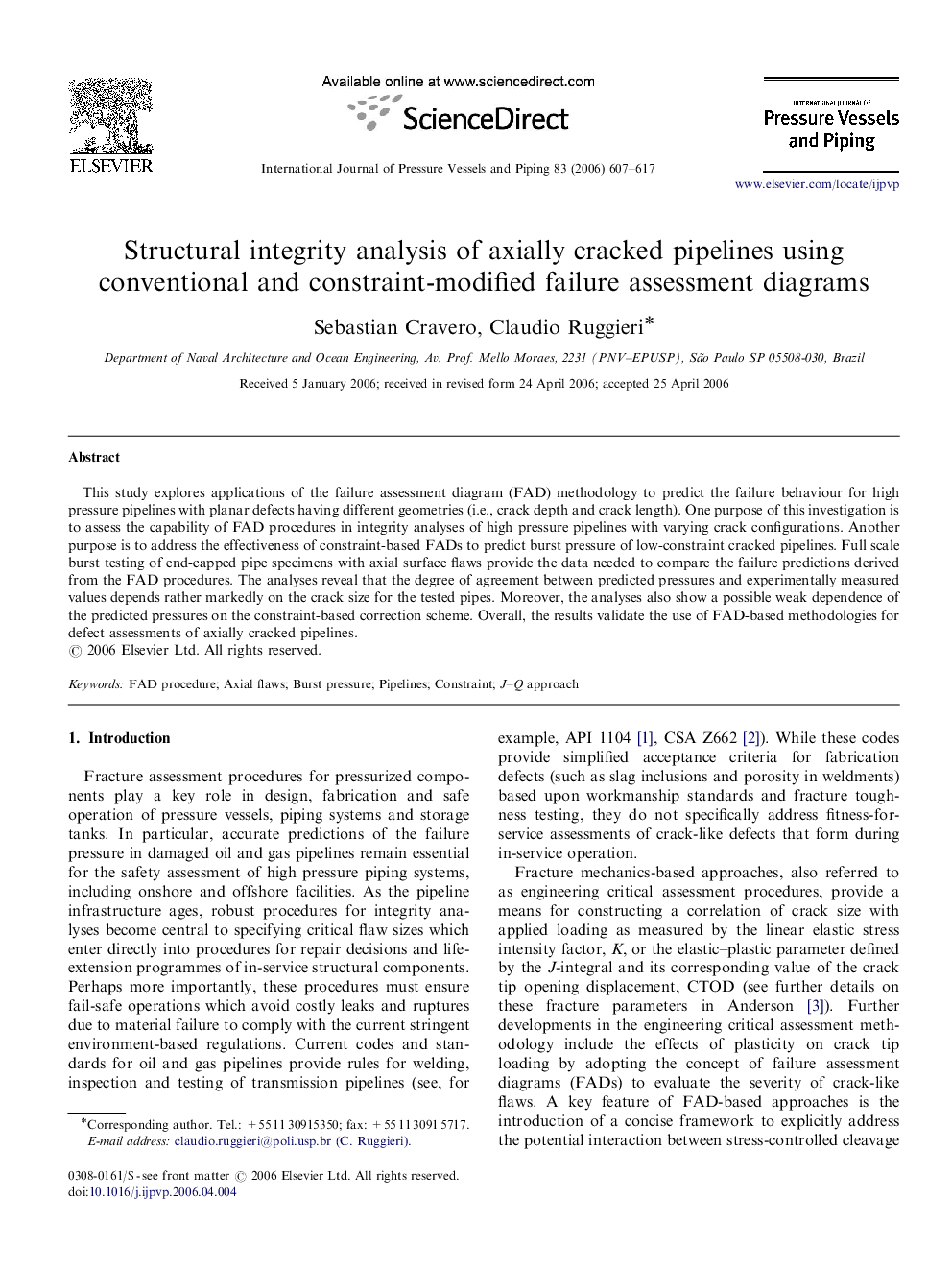| Article ID | Journal | Published Year | Pages | File Type |
|---|---|---|---|---|
| 787691 | International Journal of Pressure Vessels and Piping | 2006 | 11 Pages |
This study explores applications of the failure assessment diagram (FAD) methodology to predict the failure behaviour for high pressure pipelines with planar defects having different geometries (i.e., crack depth and crack length). One purpose of this investigation is to assess the capability of FAD procedures in integrity analyses of high pressure pipelines with varying crack configurations. Another purpose is to address the effectiveness of constraint-based FADs to predict burst pressure of low-constraint cracked pipelines. Full scale burst testing of end-capped pipe specimens with axial surface flaws provide the data needed to compare the failure predictions derived from the FAD procedures. The analyses reveal that the degree of agreement between predicted pressures and experimentally measured values depends rather markedly on the crack size for the tested pipes. Moreover, the analyses also show a possible weak dependence of the predicted pressures on the constraint-based correction scheme. Overall, the results validate the use of FAD-based methodologies for defect assessments of axially cracked pipelines.
